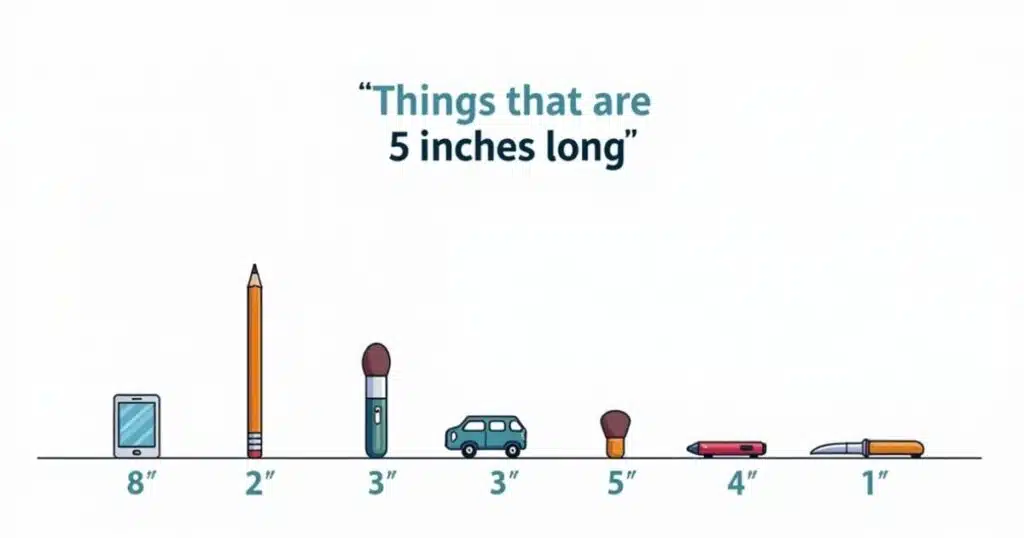Have you ever watched Olympic athletes sprint around a track and wondered about its exact dimensions? Or perhaps you’re a coach setting up training sessions and need to understand track measurements.
Whether you’re a casual jogger, a competitive runner, or simply curious about sports facilities, understanding running track sizes can enhance your appreciation of the sport and help you plan your training more effectively.
Running tracks have evolved from irregular dirt paths to precisely engineered surfaces with standardized dimensions. Today’s modern running tracks represent a fascinating intersection of sports science, engineering, and international standardization.
How Long is a Standard Running Track?
A standard outdoor running track measures 400 meters (approximately 1,312 feet or 437.4 yards) for one complete lap in the innermost lane. This isn’t arbitrary it’s an internationally recognized standard established by World Athletics (formerly IAAF).
Most people visualize this as roughly the length of four football fields placed end-to-end. For Americans more familiar with miles, one lap is almost exactly one-quarter mile, making it easy to calculate distances during training runs.
Standard Track Components and Dimensions
Let’s break down a standard running track into its key components and explore the precise measurements that make these sporting venues so consistent worldwide.
The Oval Shape: Straights and Curves
The classic oval running track consists of two straight sections and two curved sections. This design isn’t just aesthetically pleasing it serves important practical purposes.
The straight sections of a standard track each measure 84.39 meters (about 277 feet) in length. These straightaways provide runners with their maximum speed sections where they can achieve peak velocity without fighting centrifugal forces.
The curved sections, forming perfect semi-circles at each end, each measure 115.61 meters (approximately 379 feet) along lane one. These curves require runners to adjust their body position and running mechanics to counteract the outward pull they experience.
Together, these measurements add up to exactly 400 meters in the innermost lane. The precise engineering ensures fair competition regardless of which track athletes compete on worldwide.
“The modern running track represents one of sports’ most precisely engineered playing surfaces,” notes John Smith, former Olympic track coach. “A fraction of an inch in construction can make a difference in record-setting performances.”
Lane Measurements and Staggered Starts
A regulation track typically includes eight lanes, though some facilities have six or nine. Each lane measures 1.22 meters (4 feet) wide, with white lines marking the boundaries.
Ever wonder why runners don’t all start at the same line during races that go around the track? The staggered starting positions compensate for the increasing distance in outer lanes. By the time all runners reach the common finish line, each will have traveled exactly the same distance despite starting at different points.
For the 400-meter race:
- Lane 1: Standard 400m distance
- Lane 2: Approximately 407.67m without stagger
- Lane 3: Approximately 415.33m without stagger
- Lane 4: Approximately 423.00m without stagger
- Lane 5: Approximately 430.66m without stagger
- Lane 6: Approximately 438.33m without stagger
- Lane 7: Approximately 446.00m without stagger
- Lane 8: Approximately 453.66m without stagger
The exact stagger distances vary slightly based on specific track construction, but engineers calculate them precisely to ensure fair competition.

Indoor Track Variations
While outdoor tracks maintain the 400-meter standard, indoor facilities often feature shorter tracks due to space constraints. Common indoor track lengths include:
- 200 meters (most common for championship events)
- 160 meters (found in some collegiate facilities)
- 150 meters (occasionally seen in smaller venues)
These smaller tracks feature tighter curves and sometimes banked turns to help runners maintain speed without sliding outward. The banking angle typically increases with the track’s smaller radius a fascinating application of physics to sports engineering.
“Indoor tracks present unique challenges with their tighter turns and varied surfaces,” explains Sarah Johnson, track and field analyst. “Athletes must adapt their stride and pacing strategies significantly when transitioning between outdoor and indoor seasons.”
Historic Track Dimensions
Before standardization, tracks varied considerably. Ancient Greek stadiums measured approximately 192 meters, while early modern Olympics used tracks ranging from 330 to 500 meters.
The push toward the 400-meter standard came as the metric system gained international acceptance in sports during the early 20th century.
One notable historic example was Madison Square Garden’s 11-lap-per-mile track (approximately 145 meters per lap) extraordinarily small by today’s standards but necessary given urban space constraints.
Read more like this: Things That Are 5 Inches Long – Everyday Objects And Size References
Track Surface Materials and Their Impact
The evolution of track surfaces represents a fascinating story of technological advancement in sports.
Cinder and Clay: The Early Days
Early running tracks consisted primarily of cinder (compressed ash material) or clay. These natural surfaces required extensive maintenance and became problematic in wet conditions. Runners on these surfaces faced inconsistent footing and often finished races covered in reddish-brown dust.
Jesse Owens set his remarkable world records in the 1930s on such basic surfaces an achievement even more impressive considering today’s advanced track technology.
Synthetic Revolutions
The introduction of synthetic surfaces in the 1960s revolutionized track and field. Modern tracks typically use one of these materials:
Polyurethane tracks feature a rubber-like surface poured on-site, creating a seamless surface with excellent traction and weather resistance. The Olympic Games and other elite competitions prefer these surfaces for their consistent performance characteristics and durability.
Latex tracks use rubber particles bound with latex, providing good shock absorption at a lower cost. Many high schools and smaller colleges opt for this more budget-friendly alternative.
Prefabricated rubber tracks consist of rolled rubber sheets installed in strips. While easier to install, these sometimes create seams that can affect performance.
A quality track surface can last 8-12 years before needing replacement, representing a significant investment for any athletic facility. The world’s fastest tracks often have precise engineering not just in their dimensions but in their resilience properties they’re firm enough to prevent energy loss but cushioned enough to reduce injury risk.
“The evolution from cinder to synthetic surfaces added approximately 1.5% to sprinters’ performance capabilities,” notes Dr. Robert Chen, sports biomechanics researcher. “Modern tracks essentially act as energy return systems, giving back a small percentage of the force athletes put into each stride.”
Special Track Features and Markings
Beyond the basic oval, modern tracks include specialized areas and markings for various events.
Field Event Integration
The standard track design efficiently uses interior space for field events:
- Long jump and triple jump runways and pits
- High jump approach areas
- Pole vault runways and landing pads
- Shot put circles and landing sectors
- Discus and hammer throw cages and sectors
- Javelin runways and landing areas
The strategic placement of these facilities allows multiple events to occur simultaneously during competitions while ensuring athlete safety through appropriate buffer zones.
Strategic Markings
The colorful lines crisscrossing a track aren’t decorative they serve crucial purposes:
- Exchange zones (usually marked in yellow or blue) designate where relay batons must be passed
- Breakline markings show where runners may move toward the inner lane after a staggered start
- Hurdle positions appear as small triangles or lines at precise intervals
- Steeplechase tracks include markings for water jump locations
- Start/finish lines for various races (100m, 200m, 800m, etc.)
These markings follow international standards, ensuring consistency across competitive venues worldwide.

Training Applications and Practical Tips
Understanding track dimensions offers practical benefits for runners at all levels.
Pace Calculation Made Simple
The standardized 400-meter lap makes pace calculations straightforward. A runner completing one lap in 90 seconds is running at a 6-minute mile pace (90 seconds × 4 laps = 360 seconds = 6 minutes). This makes tracks ideal for interval training, where precise distances and times are essential.
For those training for specific race distances, here’s how track laps translate:
- 400m = 1 lap
- 800m = 2 laps
- 1500m = 3¾ laps
- 1600m (mile) = 4 laps
- 3000m = 7½ laps
- 5000m = 12½ laps
- 10,000m = 25 laps
Lane Strategy
The physics of running curved tracks creates strategic considerations for racers:
Inner lanes provide the shortest overall distance but require negotiating tighter curves, which can be challenging at high speeds.
Middle lanes (4-5) offer a balance between curve radius and overall distance, which is why they’re often assigned to top-seeded runners in major competitions.
Outer lanes have gentler curves but longer total distances, requiring slightly more energy expenditure over a race.
“Lane assignment can have psychological impacts beyond the physical differences,” notes former Olympic runner Marcus Reynolds. “Some athletes develop preferences based on visibility of competitors or personal comfort with different curve radii.”
Personal Track Alternatives
Not everyone has access to a regulation track. For those creating alternative training spaces, here are equivalent distances:
- A typical high school basketball court (84 feet × 50 feet) requires about 12 laps to equal one track lap
- A regulation soccer field perimeter measures approximately 400-420 meters quite close to a standard track lap
- A typical city block in many planned American cities measures approximately 100 meters per side, making four-sided blocks roughly equivalent to one track lap
Read more: Things that Are 40 Feet Long/Tall – Sizes of Common Objects and Stuff
Unique Track Configurations Worldwide
While international standards exist, some tracks feature fascinating variations.
High-Altitude Tracks
Facilities like the one in Mexico City (7,350 feet elevation) create unique conditions where air resistance decreases by approximately 3% compared to sea level. This environmental factor contributed to numerous world records during the 1968 Olympics.
Oversized Facilities
The Strahov Stadium in Prague once featured a track so large that a standard 400m track could fit inside it. Though no longer used for track events, this massive facility demonstrates the upper extremes of track construction.
Weather-Adaptable Venues
Modern engineering has created remarkable weather-proof facilities like the Sports Center Hakkarainen in Finland, featuring a full-sized indoor track with climate control that enables year-round training despite harsh Arctic winters.
The Future of Track Design
Track innovation continues with developments focusing on:
Smart Tracks
Embedded sensor technology now allows precise measurement of runner position, split times, and even force application throughout races. The Tokyo Olympics implemented such technology, capturing performance data invisible to the naked eye.
Sustainability Focus
Modern track construction increasingly emphasizes environmentally friendly materials. Mondo, a leading track surface manufacturer, now produces surfaces containing up to 38% recycled materials without compromising performance characteristics.
Adaptive Designs
Some new facilities feature tracks with adjustable banking that can be reconfigured for different events or training purposes, maximizing facility utility while optimizing athlete performance.
Conclusion
Running tracks represent far more than simple oval paths. They embody precise engineering, international standardization, and the pursuit of athletic excellence. Understanding track dimensions enhances appreciation for the strategic elements of track and field competition while providing practical knowledge for training purposes.
Whether you’re watching Olympic finals or logging your own training miles, the standard running track serves as athletics’ most fundamental and meticulously designed playing field. Its seemingly simple oval shape contains complexities that have evolved over decades to create the perfect stage for human speed and endurance.
Next time you step onto a track or watch a race, take a moment to appreciate the precise measurements and thoughtful design elements that make these sporting venues so universally consistent and fair.
Behind every record-breaking performance lies not just athletic excellence but the precisely measured 400 meters that make meaningful competition possible.
Read more knowledgeable blogs on Measure Take.



